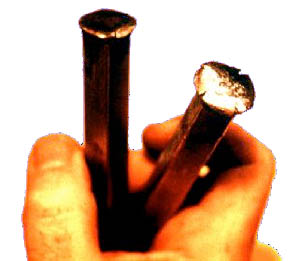Using Hand Tools Safely
Hammers, wrenches, chisels, pliers, screwdrivers, and other hand tools are often underrated as sources of potential danger. Hand tools may look harmless, but they are the cause of many injuries. In fact, an estimated 8 percent of all workplace compensable injuries are caused by incidents associated with hand tools. These injuries can be serious, including loss of fingers or eyesight.

To avoid such injuries, remember the following safety procedures:
• Use the right tool for the job. Don’t use your wrench as a hammer. Don’t use a screwdriver as a chisel, etc. Go back to the tool house and get the right tool in the right size for the job.
-
Don’t use broken or damaged tools, dull cutting tools, or screwdrivers with worn tips.
-
Cut in a direction away from your body.
-
Make sure your grip and footing are secure when using large tools.
-
Carry tools securely in a tool belt or box. Don’t carry tools up ladders. Use a hoist or rope.
-
Keep close track of tools when working at heights. A falling tool can kill a co-worker.
-
Pass a tool to another person by the handle; never toss it.
-
Use the right personal protective equipment (PPE) for the job. Follow company instructions for selecting and using safety eyewear, steel toed shoes, gloves, hard hats, etc.
-
Never carry sharp or pointed tools such as a screwdriver in your pocket.
-
Select ergonomic tools for your work task when movements are repetitive and forceful.
-
Be on the lookout for signs of repetitive stress. Early detection might prevent a serious injury.
-
Always keep your tools in top condition. A dull blade or blunt point can lead to injury.
-
Store tools properly when you stop work.
Use safety as a vital tool…at work it’s the “Golden Rule”!!
Download flyer: STOTW_352_UsingHandToolsSafely.pdf (185.97 kb)
Download Spanish Flyer: STOTW_352_UsingHandToolsSafely_esp.pdf (186.48 kb)

